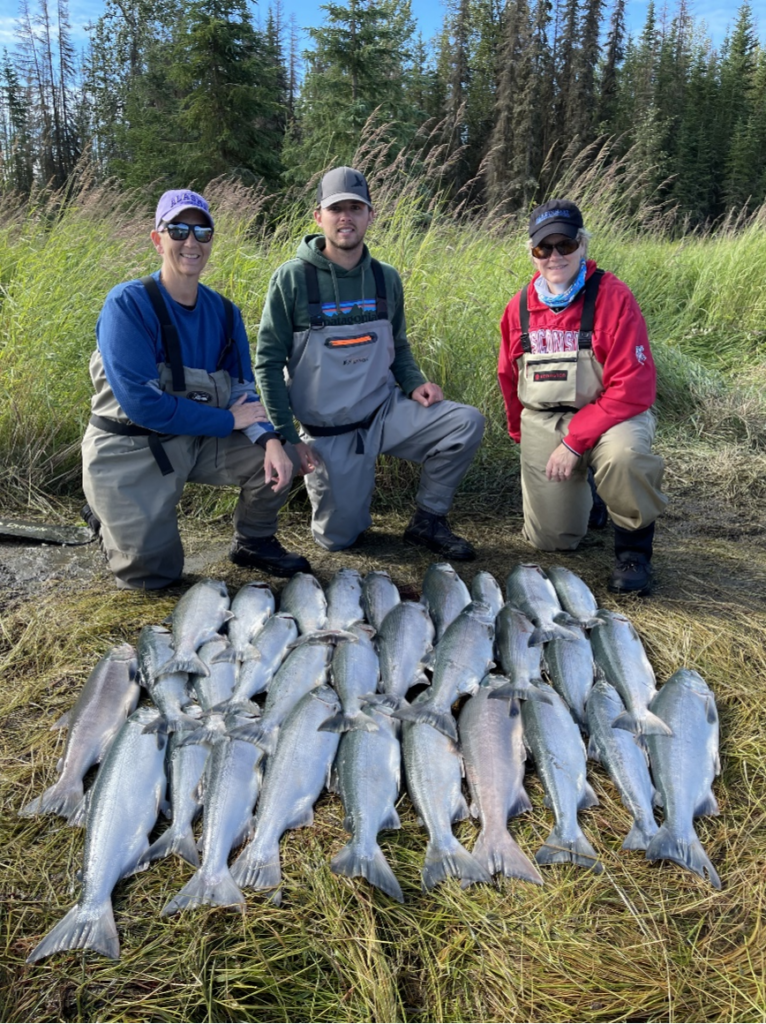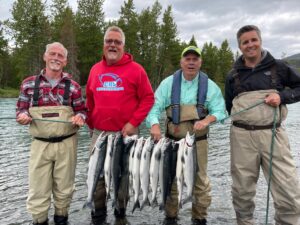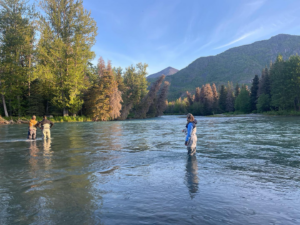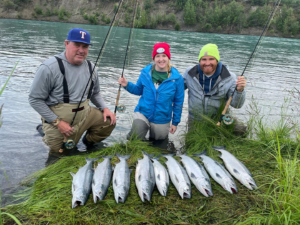Have you ever felt the primal rush that comes with reeling in a beautiful, wild fish? Can you recall feeling its life force reverberate up the line, all the way through the rod, and into the core of your being? Have you ever seen the shimmering spectacle of a sockeye salmon fighting the currents, a blaze of silver and red against the backdrop of a crystal-clear river?
If you’re an angling enthusiast, we’re sure all of this sounds familiar. And if you’re new to the art of sockeye salmon fishing on the Kenai River, get ready for an unforgettable experience!
Sockeye salmon season is an unmissable event. It’s a testament to the intricate dance of nature and an opportunity to participate in one of Alaska’s most cherished traditions! Let’s dive deeper into our comprehensive guide to sockeye salmon fishing on the Kenai River. If you have any questions, feel free to ask our experts towards the end.
Understanding Sockeye Salmon
Sockeye salmon, or oncorhynchus nerka, have a mystique that draws fishing enthusiasts from across the globe to the swift currents of the Kenai River. Known as “reds” due to the vibrant hue they develop during spawning, sockeye salmon are truly a spectacle to behold.
Born in the freshwater environments of the Kenai River, the tiny sockeye salmon, or “smolts,” embark on a long journey to the ocean. Over the course of 1–3 years, they brave the vast expanses of the Pacific Ocean, dodging predators and surviving the marine ecosystem while growing into their adult sizes.
This phase of their life is a testament to their adaptability and tenacity. However, their true test of strength begins when they answer the call of nature to reproduce and ensure the continuation of their species.
The mature sockeye salmon journey thousands of miles back to their natal freshwater spawning grounds in the Kenai River. This heroic voyage, often against the current and uphill, showcases their incredible stamina and determination.
Timing the Sockeye Salmon Run

When it comes to fishing sockeye salmon, timing is everything. The first run typically starts in mid to late May, peaking in mid-June. The second, often larger run, commences in early June, with numbers peaking towards the end of the month.
However, these timelines can vary based on environmental factors like water temperature and river flow. If you want to increase your chances of a successful catch, stay updated on run timings.
Recommended Read: Sport Fish Run Timings: Alaska Department of Fish and Game
Selecting the Right Equipment
Your gear can make or break your sockeye salmon fishing experience. You’ll need a medium to heavy-weight rod, capable of withstanding the strength of these powerful fish.
Spinning reels or baitcasting reels with a strong drag system are preferred, loaded with 20–30 lb. monofilament or braided line. As for the terminal tackle, opt for a setup with 3–4 foot leader, a size 2/0–3/0 barbless hook, and a ½ to 1-ounce weight.
Choose brightly colored tackle to attract the salmon as they journey upstream.
Mastering the Technique
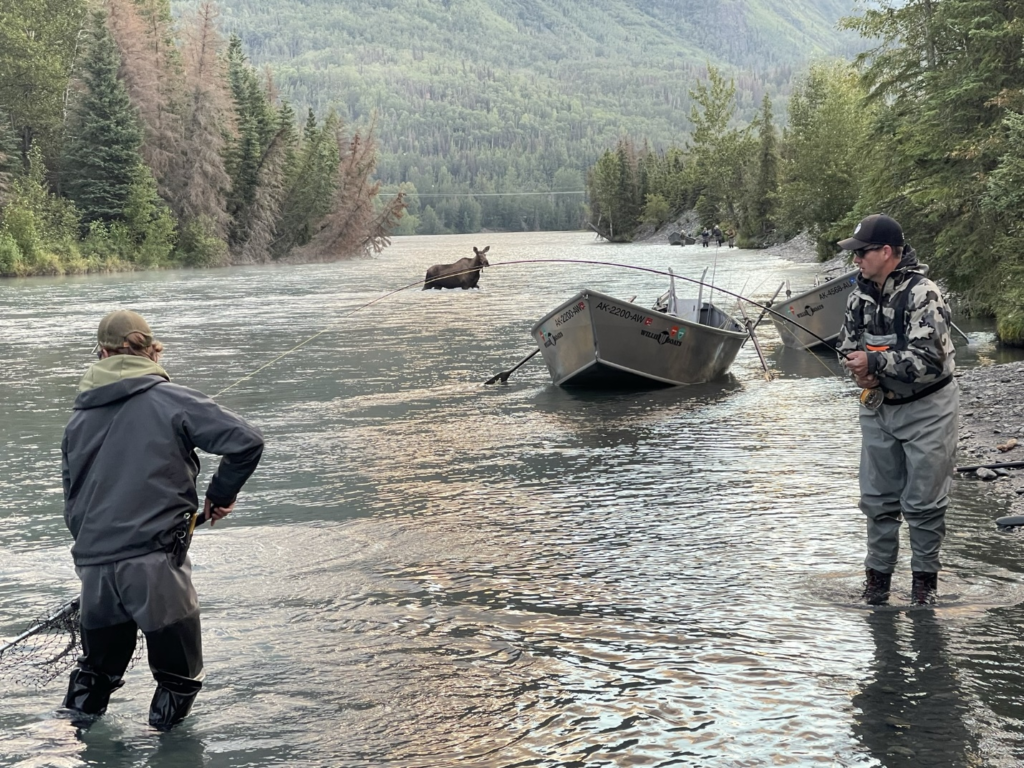
Excellence in fishing, as in any art, isn’t achieved overnight. It’s a beautiful blend of practice, patience, understanding, and finesse.
When it comes to landing a sockeye salmon, the importance of mastering the technique cannot be overstated. If you want to turn a fishing trip into a memorable conquest, it’s time to start honing your skills.
It’s important to understand that sockeye salmon aren’t your typical prey. Unlike many other species that bite bait or lures, sockeye are less likely to strike out of hunger during their spawning run.
They’re on a mission, and feeding isn’t their primary focus. However, they are aggressive and will strike out of irritation or reflex, which is exactly what skilled anglers capitalize on.
The technique used to catch sockeye salmon is often called “flossing.” The idea is to present your lure in such a way that it drifts into the salmon’s open mouth. This requires a keen understanding of the river’s current and the fish’s behavior. The line should drift naturally with the current at the same pace as the water, which often requires casting upstream and allowing the lure to flow down with the river.
When the line moves across the river, it should come into contact with the salmon’s mouth. At this point, a quick upward jerk of the rod sets the hook in the fish’s mouth. Perfecting this hook set is one of the most critical aspects of sockeye salmon fishing. Too slow, and the fish will spit out the hook; too fast, and you might miss the fish or, worse, cause it harm.
Mastering this technique involves understanding sockeye salmon’s habits, becoming well-versed in the river’s flow, and developing a keen sense of timing. It’s a skill that requires practice, patience, and a deep respect for these powerful creatures.
When you feel that unmistakable pull on your line and you see that magnificent, red creature leap out of the water, you’ll know that all your effort has been worth it.
Recommended Read: For Sockeyes You Gotta Swing!
The Right Attitude for Sockeye Salmon Fishing: Patience, Gratitude, and Joy
As with any endeavor worth pursuing, the attitude you bring to sockeye salmon fishing is as critical as the gear in your hands or the guide by your side. It’s about more than just the hunt for the big catch; it’s also about reverence for the process, respect for the magnificent creature you’re trying to land, and the joy of immersing yourself in nature’s grandeur.
One of the first things any seasoned angler will tell you is that patience is key in fishing. Sockeye salmon aren’t simple adversaries; they demand respect, time, and patience. You’re not merely casting a line; you’re entering a world, trying to decipher their patterns, and learning to move with the river’s rhythm.
Waiting for that thrilling moment when a sockeye takes your lure isn’t wasted time. Instead, it’s a period of calm anticipation, connecting with the world around you, and truly being present in the moment.
When you do land a sockeye, the feeling is nothing short of exhilarating! This is the time to feel an immense sense of gratitude. This isn’t just about the thrill of the catch; it’s also about being thankful for the privilege of experiencing this connection with such a majestic creature. Every sockeye you land is a gift. It’s a testament to your skills, your patience, and the salmon’s life cycle.
Finally, remember that fishing is about the journey, not just the destination. Whether you land a trophy-sized sockeye or spend the day soaking in the beauty of the Kenai River, the experience should bring you joy. The goal is not only to catch fish but to create lasting memories, learn, grow, and relish in the sheer pleasure of fishing. Celebrate every cast, every nibble on your line, and every splash in the water!
Jason’s Guide Service: Your Partner for the Ultimate Kenai River Experience
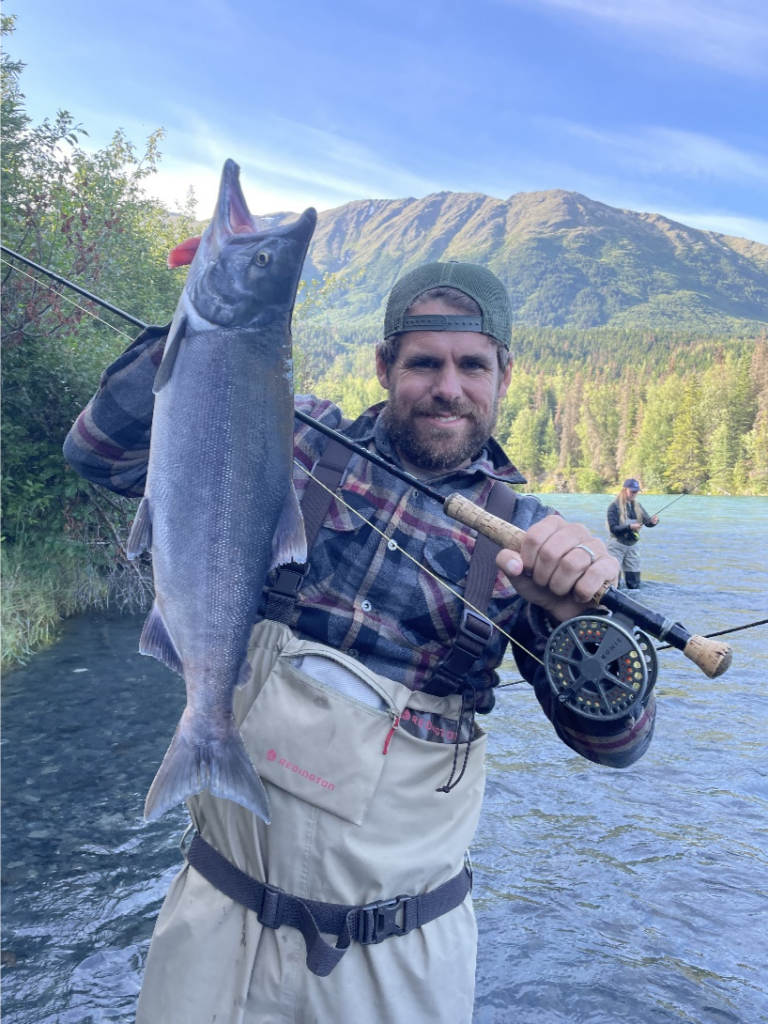
If you’re looking for a seamless and rewarding Kenai River sockeye salmon fishing experience, Jason’s Guide Service is your perfect partner.
With years of experience navigating the Kenai River, Jason’s team helps you understand the salmon’s behaviors, perfect your technique, and enjoy the thrill of the catch. Their intimate knowledge of the Kenai River and its fish population allows them to provide an unparalleled angling experience.
This isn’t just about catching fish; it’s about appreciating the balance of nature, learning about the lifecycle of the sockeye salmon, and respecting the role we play as anglers. Whether you’re interested in Kenai rainbow trout fishing, guided silver salmon fishing, or fly fishing, Jason’s Guide Service is the right place to start.
If you’re ready to feel the excitement of sockeye salmon fishing surge through your veins, get in touch with Jason’s Guide Service today! Your upcoming Kenai River fishing trip is right around the corner.

